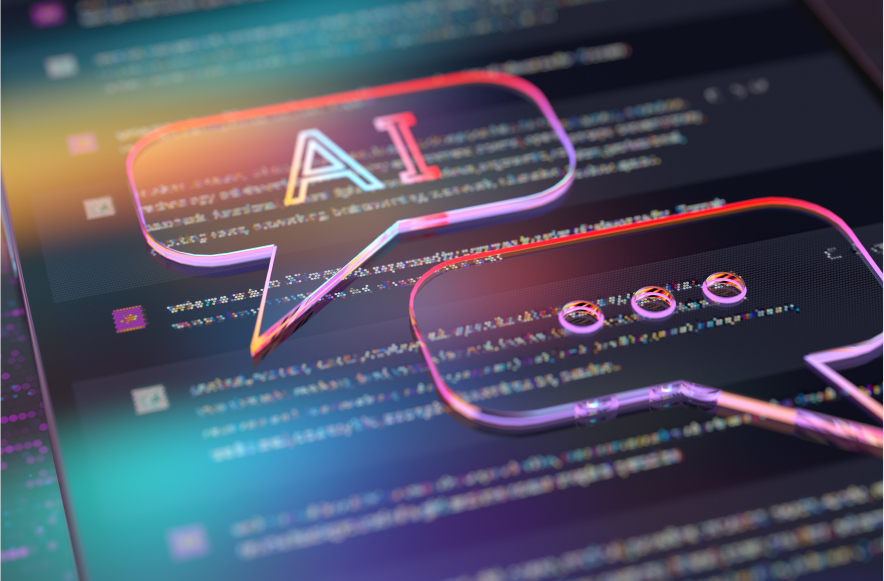The Change Agent
Legacy applications pose challenges in terms of agility, security and efficiency. Application modernization is crucial to adapt and optimize them to meet evolving business needs.
From Rusty Relics to Digital Dynasties
In today’s dynamic business landscape, where innovation is the currency of success, organizations have a pivotal decision: Embrace application modernization or risk falling behind in the relentless race for market dominance. Legacy applications are pervasive in today’s IT environments, posing challenges in terms of agility, security and efficiency. It’s crucial to adapt and optimize legacy programs and applications to meet the evolving needs of businesses and users. This is where application modernization comes in.
What is application modernization? Also known as legacy modernization, application modernization involves updating and enhancing existing software to leverage new technologies, improve performance and address current business requirements. Outdated technology stacks, limited scalability and maintenance challenges characterize legacy programs and applications. Embracing application modernization isn’t merely a matter of staying afloat—it’s essential to accelerate and strategically navigate the relentless tides of innovation to remain competitive.

92% of enterprises say they are actively working on at least one app modernization project.1
Companies that have undertaken comprehensive legacy application modernization efforts have reported a significant uptick in agility and scalability, enabling them to swiftly respond to changing market dynamics and customer demands. According to recent surveys, organizations that modernize their applications experience a 30% increase in agility, allowing them to pivot strategies and adapt to emerging trends with unprecedented speed.
How could this show up for businesses today? Sometimes information is deliberately hidden within an organization for security reasons, but more often, the organization is too big, and their outdated systems create gaps in knowledge. For example, the vice president of the wealth management division of a large national bank doesn’t have visibility into transactions in the credit card division. Why is that a problem? A customer who spends hundreds of thousands of dollars a year on a credit card might be a good prospect for an investment account with the bank. The opportunity, however, to cross-sell products or services to the same customer is missed because of inflexible legacy systems.
Organizations that modernize their applications experience a 30% increase in agility.2
Market Perspective
Here, we explore part of a white paper from Everest Group that provides more perspective on how to prevent application modernization failure. The format below has been adapted from the original white paper.
Unlock the Value in Applications
What do organizations need to consider to unlock the value in applications?
Everest Group: For executives considering investing in new application technology, Everest Group pinpointed three critical focus areas essential for maximizing value: team structure, culture and talent strategy. To achieve top-tier outcomes, your application modernization strategy must be underpinned by a robust organizational DNA featuring:
- Dedicated product teams: Move away from traditional factory models toward persistent teams that evolve with the product’s lifecycle. This approach fosters trust and expertise within the team, enabling them to craft optimal product roadmaps.
- Next-generation talent: A meticulous talent strategy is paramount, encompassing the entire talent lifecycle from upskilling to retention and acquisition. This strategy is key to surmounting challenges inherent in scaling agile practices effectively.
- A3 culture: High-performing generative cultures embrace novelty and avoid stagnation (Assertive), are open to introspection (Aware) and cut across silos by being highly cooperative (Associative).

Almost 90% of enterprises agree that legacy and monolithic applications are a major impediment to their application services.3

What are the risks of failing to build this type of DNA into the company culture?
Everest Group: Without these foundational DNA components, application modernization initiatives risk merely altering processes instead of driving meaningful outcomes. Agile practices might prioritize speed over quality, sidestep documentation and overly scrutinize progress. However, when implemented within the right framework, these practices yield scalable, people-centric development, fostering better business-IT alignment and systematic change management.
With the right DNA in place, application modernization transformations can be transformative. Innovation accelerates, fostering enhanced collaboration among employees and hyper-productivity. By refocusing on outcomes, the end-customer experience is significantly elevated. Transformation without this foundational DNA is akin to driving a sports car in second gear; while the technical components are present, they aren’t being optimally utilized.
What are some key objectives organizations want to accomplish through an application modernization initiative?
Everest Group: Depending on the organization’s goals and existing legacy infrastructure, various business objectives may be prioritized. These typically encompass:
- Agility to adapt to changing business demands
- Establishment of resilient and scalable operations
- Consistent and distinguished service delivery enablement
- Cost optimization via enhanced process efficiencies
Our Perspective
TEKsystems Global Services leaders Kunal Patil and Basu Ramanan share their knowledge on modernized applications and how they enable greater agility and innovation, allowing organizations to seize new opportunities and adapt quickly to market changes.
How Application Modernization Breeds Innovation
Enterprises remain hyper-focused on improving business agility so they can adapt to the changing needs and high expectations of customers, who demand seamless experiences across the products and services they consume. Many organizations, however, still rely on systems that are based on legacy technology and platforms that are difficult to maintain, incur high licensing costs and lack the flexibility to adapt to changing customer needs.
The lack of flexibility creates friction during the buying process, resulting in lost customers. Legacy system modernization enables organizations to build modern systems that are more flexible, modular, easier to maintain and cost-effective. Modernizing applications enhances business agility, enabling faster adaptation to evolving customer demands and the delivery of superior customer experiences while efficiently scaling products and services. Organizations gain a competitive advantage by differentiating themselves with innovative solutions using modern application architecture.
Modernized applications scale seamlessly to accommodate growing workloads and user bases. By leveraging cloud-based resources, containerization and microservices architecture, organizations can dynamically allocate resources as needed to handle spikes in demand without incurring downtime or performance degradation. Scalability ensures that applications can grow with the business and adapt to changing requirements over time.

Organizations today are hyper-focused on improving business agility, and application modernization initiatives allow them to adapt to changing customer needs quicker, ensuring better customer experience while delivering products and services at scale.
 Kunal Patil TEKsystems Global Services
Kunal Patil TEKsystems Global Services
Improved Security Through Application Modernization
Legacy applications can be vulnerable to security threats due to outdated code, lack of security features and susceptibility to known vulnerabilities. Legacy modernization includes implementing robust security measures such as encryption, authentication, access controls, and regular security patches and updates. Modernized applications can decrease threats, like cyberattacks, data breaches and other security risks, thereby protecting sensitive information and safeguarding the organization’s reputation.
What’s a barrier organizations must avoid? Being too narrow in their approach to their enterprise application modernization initiative. They may think of application modernization as a simple task where they need to rewrite or refactor this app.
But that application might interact with 10 different business processes, some of which might involve other leaders of the C-suite. The need for cross-collaboration and cross-functional alignment of application modernization can often be neglected, when in reality, application modernization is part of the broader digital business transformation journey.

Organizations must take a holistic approach and assess their level of readiness for transformation before embarking on their application modernization journey. Consider several challenges spanning across people, processes and technology when approaching modernization:
Today’s
customers demand a seamless experience across products they use, and modernizing applications is a key aspect of digital transformation that results in seamless customer experience across a variety of products.
 Basu RamananTEKsystems Global Services
Basu RamananTEKsystems Global Services
Measuring Success in Application Modernization
A key step for a successful legacy modernization initiative: Determine and specify the business objectives that can be assessed and tracked. For instance is how well delivery agility is improved by faster time-to-market of products and services. For each business objective, organizations should:
- Establish and define the metrics that need to be collected.
- Baseline the current state value of those metrics.
- Estimate the potential value of those metrics post-transformation.
By establishing a practice of continuous tracking of these metrics across the application modernization effort, the organization can measure the improvements achieved.
In one case, an industrial manufacturing organization discovered from customer feedback that their invoice processing was much too long, taking up to six months on average. They recognized the need to leverage new methodologies and technologies to transform the way they create, validate and approve invoices and receivables for their engine maintenance and repair division. They needed to enable better delivery agility to improve the time to market of invoices. In Phase 1 of the project, they used web portal-based application development to add features to digitally upload invoices and flag errors. With Phase 1 completed, processing time for invoices decreased from an average of six months to just 10 weeks.

Building Tomorrow
While the initial investment in application modernization may seem significant, the long-term cost savings can be substantial. Modernized applications require fewer resources to operate and maintain, resulting in lower operational costs over time. By eliminating legacy dependencies, reducing downtime and improving system efficiency, organizations can realize significant cost savings in areas such as infrastructure, support and maintenance.
Overall, the benefits of enterprise application modernization extend beyond technical improvements to include tangible business outcomes such as increased agility, innovation and competitiveness in the marketplace. By embracing legacy modernization efforts, organizations can future-proof their applications, enhance their capabilities and achieve sustainable growth in the digital age.

TEKsystems’ Tips: Best Practices for Application Modernization
Meet Our Contributors

Kunal Patil
Director of Enterprise Modernization, TEKsystems Global Services

Basu Ramanan
Enterprise Architect, TEKsystems Global Services

Sharon Florentine
Contributing Editor
Sources
- Survey: 92% of Enterprises Working on, Planning App Modernization, Integration Developer News
- Application Modernization Makes a Dent in the Technology Universe, IDG
- Decoding the Organization DNA: How To Prevent Application Modernization Failure, Everest Group
- Becoming a Fintech: Capital One’s Move From Mainframes to the Cloud, CIO.com







